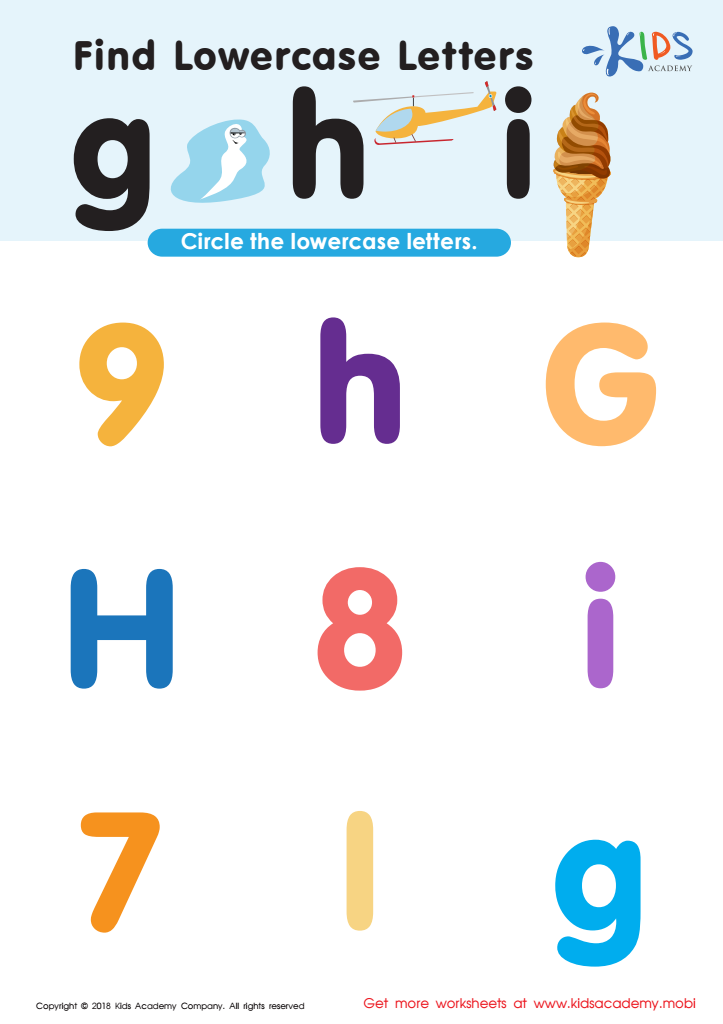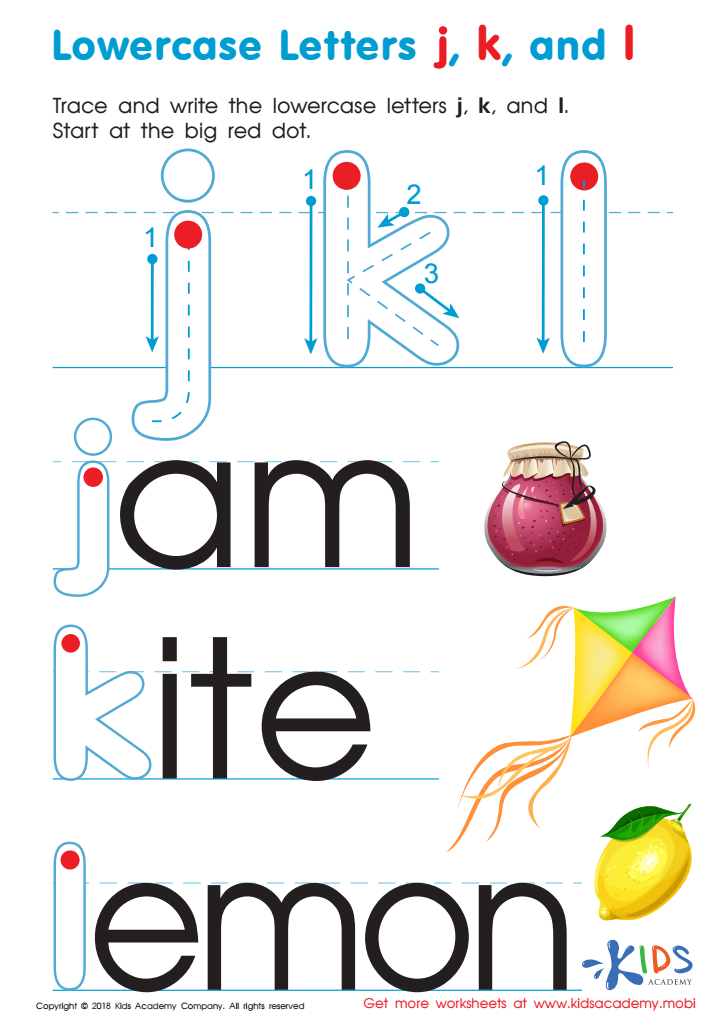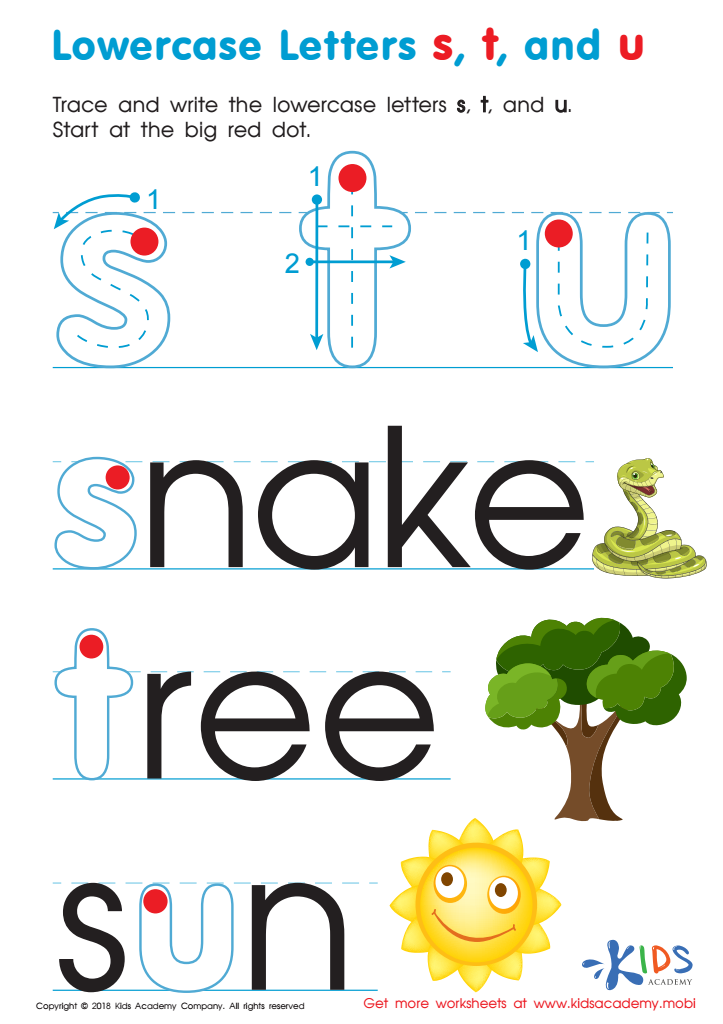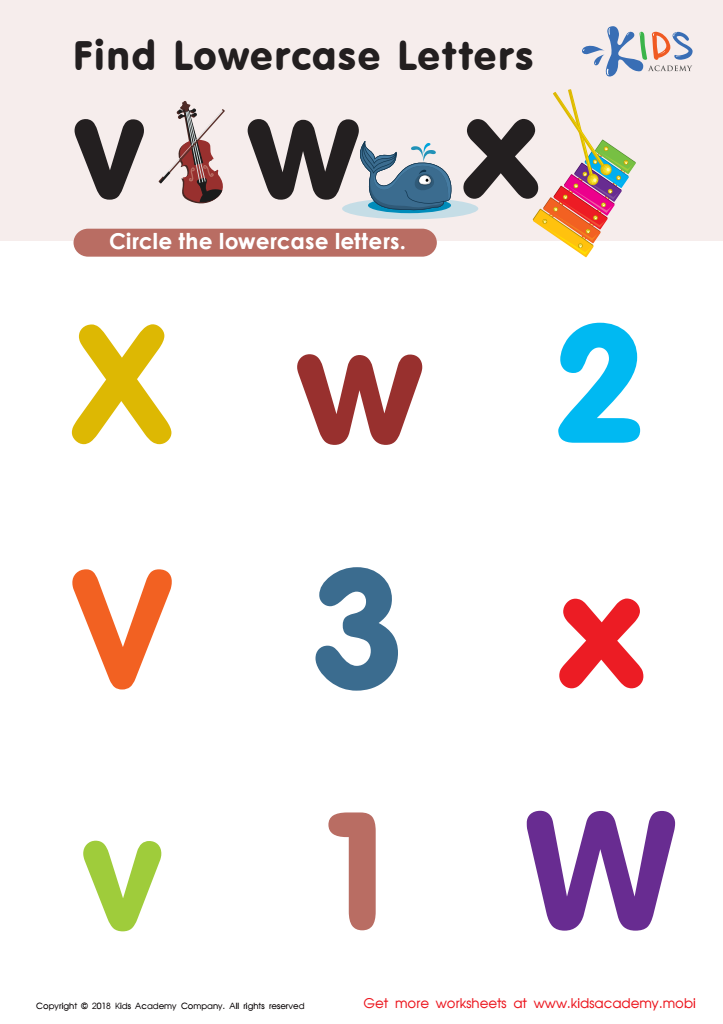Lowercase/Small Letters Worksheets for Ages 3-6
23 filtered results
-
From - To
Explore our engaging Lowercase/Small Letters Worksheets designed specifically for children aged 3-6! These worksheets provide a fun and interactive way for young learners to recognize, practice, and master lowercase letters. Filled with colorful visuals and enjoyable activities, our resources help enhance fine motor skills and boost letter familiarity through tracing, matching, and coloring exercises. Perfect for both classroom and home settings, these worksheets encourage early literacy development while keeping children entertained. Foster a love for writing and reading in your little ones as they embark on their journey to alphabet mastery with our tailored worksheets. Start learning today!


Lowercase Letters Maze Worksheet


Find Lowercase Letters g h i Worksheet


Find lowercase Letters p q r Worksheet


Find Lowercase Letters j k l Worksheet


Lowercase Letters p q r Worksheet


Find Lowercase Letters d e f Worksheet


Lowercase Letters y z Worksheet


Identifying Lowercase Letters Worksheet


Lowercase Letters j k l Worksheet


Find lowercase Letters s t u Worksheet


Uppercase and Lowercase Letters: Assessment Worksheet


Find Lowercase Letters y z Worksheet


Words with Sound L Reading Worksheet


Lowercase Letters m n o Worksheet


Lowercase Letters d e f Worksheet


Find Lowercase Letters m n o Worksheet


Find lowercase letters a b c Worksheet


Lowercase Letters s t u Worksheet


Lowercase Letters Search: Assessment Worksheet


Find Lowercase Letters v w x Worksheet


Lowercase Letters g h i Worksheet


Lowercase Letters a b c Worksheet


Lowercase Letters v w x Worksheet
Teaching lowercase letters to children aged 3-6 is vital for their literacy development and future academic success. At this stage, children are in the critical period for language acquisition and stimulation; they begin to develop phonemic awareness and understanding of text. Lowercase letters are predominant in written language, appearing in books, signs, and everyday reading materials. Familiarity with these letters allows children to engage more confidently in reading and writing activities.
Moreover, recognizing and writing lowercase letters are essential skills for early literacy. Young children often see lowercase letters first in their surroundings. This familiarity helps build their foundation in decoding words and improves their reading comprehension. Encouraging them to recognize, trace, and write small letters fosters fine motor development, laying the groundwork for skilled writing in the years to come.
Additionally, early mastery of lowercase letters creates a positive learning experience and boosts self-esteem. When children can identify and use letters confidently, they feel more empowered during literacy activities. Ultimately, prioritizing lowercase letters equips children with essential tools to navigate the written world effectively, promoting not only literacy skills but also a lifelong love for reading and learning. Consequently, both parents and teachers should see this as a critical focus in early education.

 Assign to My Students
Assign to My Students














